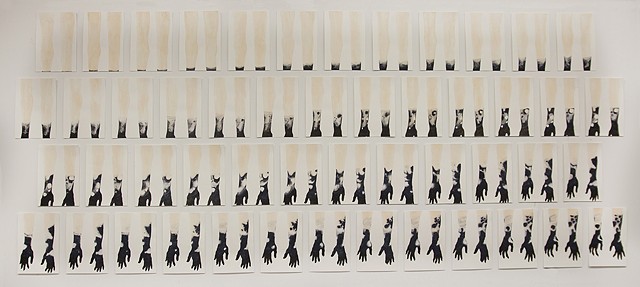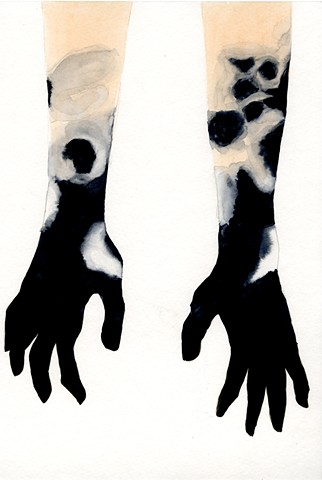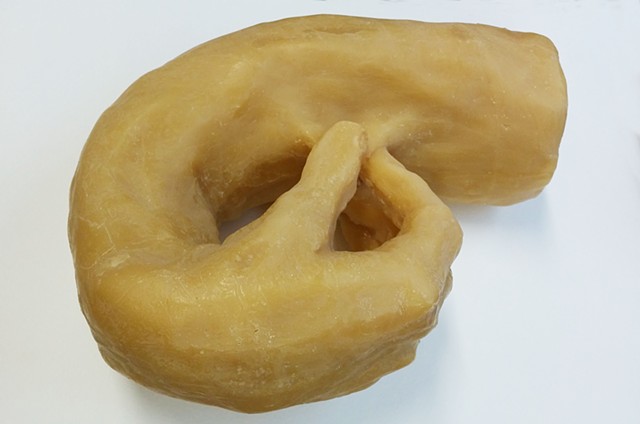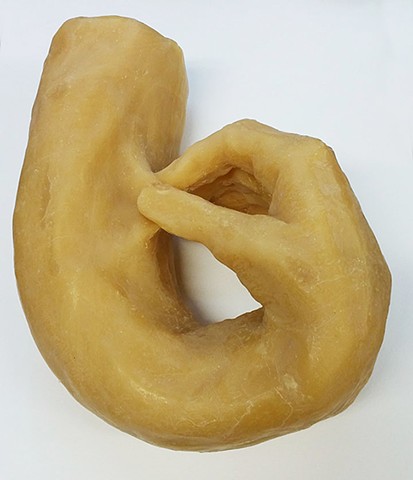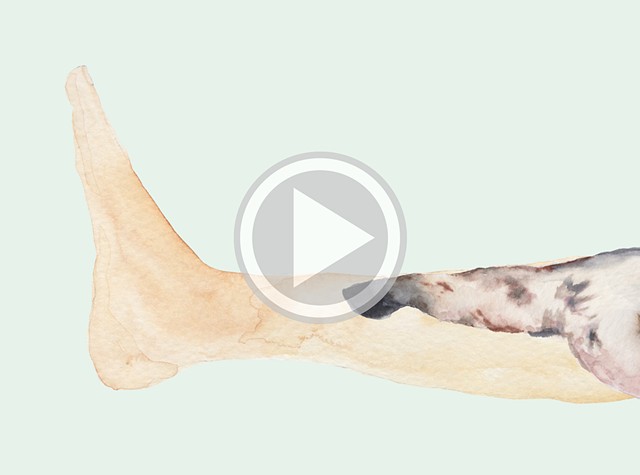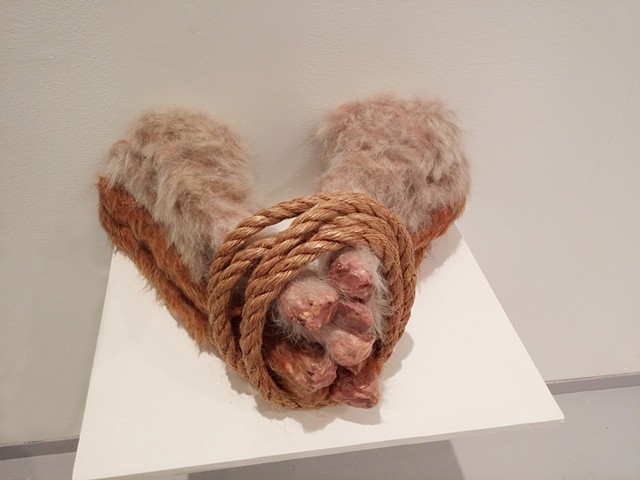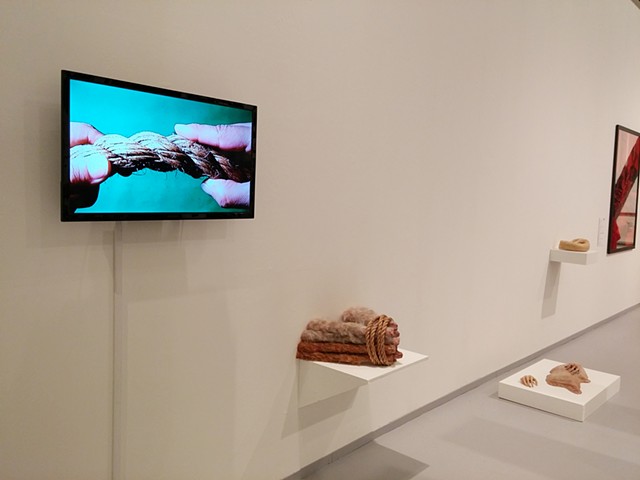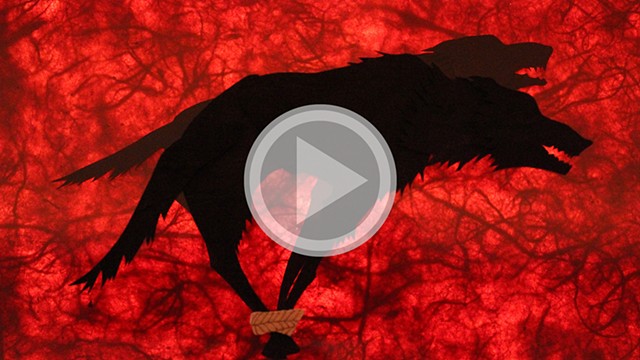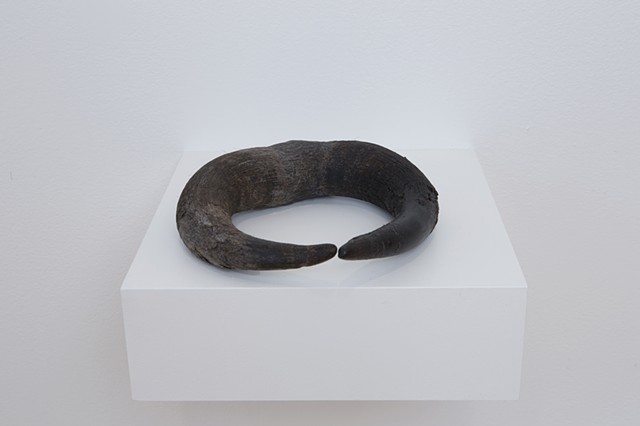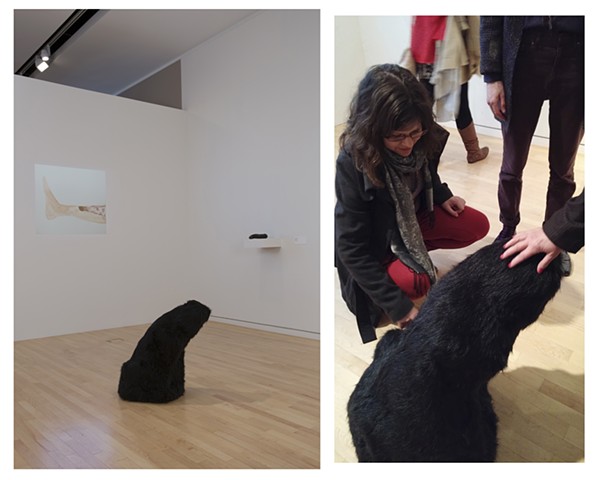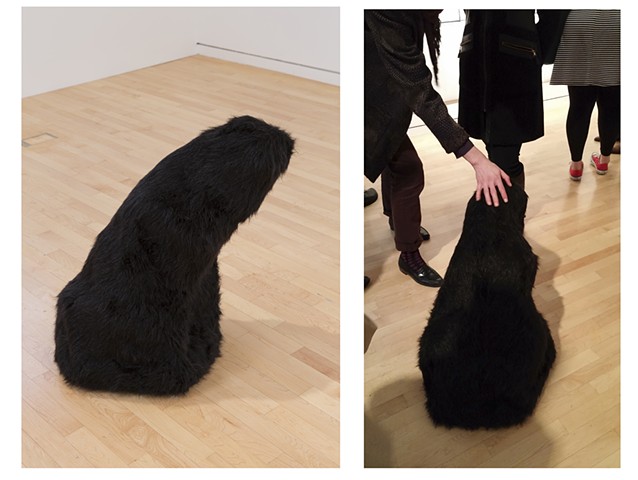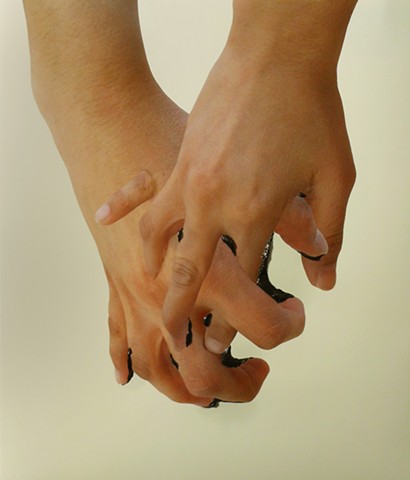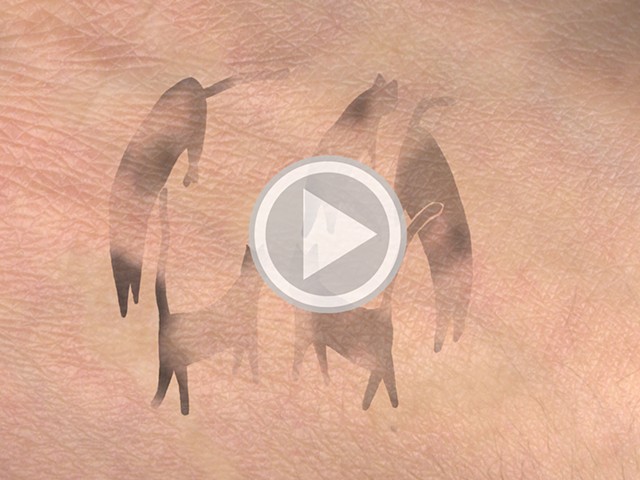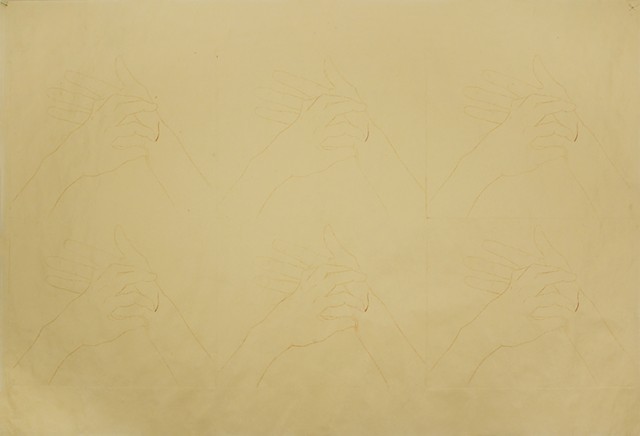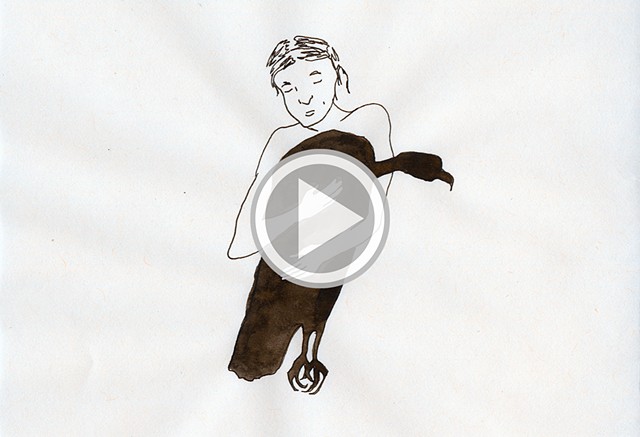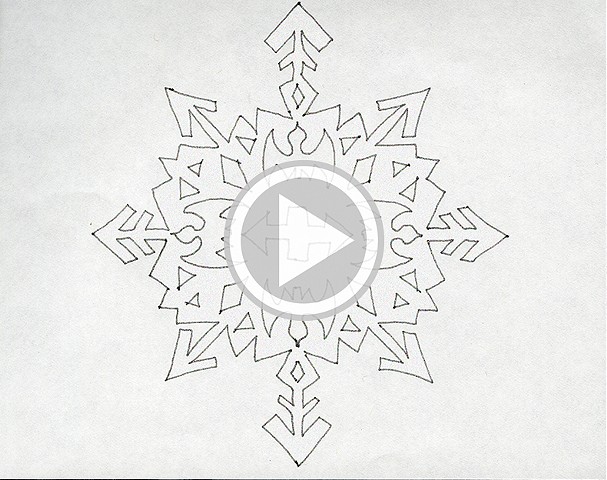Bite |2014 -2016
Bite:
A bone in my foot has died. Often when a bone dies the rest of the body feels no symptoms. Pain only arises after the death progresses to the point that the bone is near collapsing. Sheep’s horns often grow back into their skull.
Touching is a way of thinking and understanding. It grounds us in our bodies and helps us relate ourselves to our surroundings. Even when not touching, through seeing, the mind calculates what a texture or curve might feel like. Motor systems in the brain are active when performing an action, as well as when observing someone else perform that action. Subconsciously, without moving, the mind responds to the physical gestures that it sees as though it were performing the gesture itself. This is how seeing is not only a way of feeling, but also a form of empathy, as your body unconsciously feels what it sees.
This body of work explores touch as a way to try to physically grapple with what cannot be seen or touched such as parts of ourselves that we repress or that are difficult to cope with.
The works play with what is possible, they loop in on themselves and fluidly change between seemingly oppositional states, such as violence and affection, conscious and unconscious.
More writing about this work can be found here. LINK
